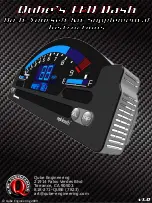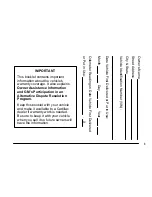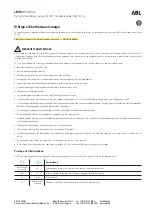
237
4-5. Using the driving support systems
4
Driving
• If a vehicle ahead has extremely
high ground clearance
• If a vehicle ahead is carrying a
load which protrudes past its rear
bumper
• If a vehicle ahead is irregularly
shaped, such as a tractor or side
car
• If a vehicle ahead is a child sized
bicycle, a bicycle that is carrying a
large load, a bicycle ridden by
more than one person, or a
uniquely shaped bicycle (bicycle
with a child seat, tandem bicycle,
etc.)
• If a pedestrian/or the riding height
of a bicyclist ahead is shorter than
approximately 3.2 ft. (1 m) or taller
than approximately 6.5 ft. (2 m)
• If a pedestrian/bicyclist is wearing
oversized clothing (a rain coat,
long skirt, etc.), making their sil-
houette obscure
• If a pedestrian is bending forward
or squatting or bicyclist is bending
forward
• If a pedestrian/bicyclist is moving
fast
• If a pedestrian is pushing a
stroller, wheelchair, bicycle or
other vehicle
• When driving in inclement weather
such as heavy rain, fog, snow or a
sandstorm
• When driving through steam or
smoke
• When the surrounding area is dim,
such as at dawn or dusk, or while
at night or in a tunnel, making a
detectable object appear to be
nearly the same color as its sur-
roundings
• When driving in a place where the
surrounding brightness changes
suddenly, such as at the entrance
or exit of a tunnel
• After the engine has started the
vehicle has not been driven for a
certain amount of time
• While making a left/right turn and
for a few seconds after making a
left/right turn
• While driving on a curve and for a
few seconds after driving on a
curve
• If your vehicle is skidding
• If the front of the vehicle is raised
or lowered
• If the wheels are misaligned
• If a wiper blade is blocking the
front camera
• The vehicle is being driven at
extremely high speeds
• When driving on a hill
• If the radar sensor or front camera
is misaligned
●
In some situations such as the fol-
lowing, sufficient braking force
may not be obtained, preventing
the system from performing prop-
erly:
• If the braking functions cannot
operate to their full extent, such as
when the brake parts are
extremely cold, extremely hot, or
wet
• If the vehicle is not properly main-
tained (brakes or tires are exces-
sively worn, improper tire inflation
Summary of Contents for RAV 4 2019
Page 7: ...7 TABLE OF CONTENTS 1 2 3 4 5 6 7 8 9 10...
Page 16: ...16 Pictorial index License plate lights P 210 Turn signal lights P 204 If equipped P Q...
Page 24: ...24 Pictorial index...
Page 106: ...106 3 1 Key information Certification for wireless remote control...
Page 168: ...168 3 5 Opening closing the windows and moon roof...
Page 228: ...228 4 5 Using the driving support systems...
Page 374: ...374 4 6 Driving tips...
Page 447: ...447 5 10 Tips for operating the audio visual system 5 Entune audio For vehicles sold in Canada...
Page 448: ...448 5 10 Tips for operating the audio visual system Gracenote...
Page 449: ...449 5 10 Tips for operating the audio visual system 5 Entune audio For U S owners...
Page 494: ...494 5 16 Toyota Entune overview For vehicles sold in the U S A Canada and Puerto Rico...
Page 537: ...537 6 4 Using the other interior features 6 Interior features...
Page 538: ...538 6 4 Using the other interior features...
Page 565: ...565 7 3 Do it yourself maintenance 7 Maintenance and care Rear...
Page 610: ...610 7 3 Do it yourself maintenance...
Page 656: ...656 8 2 Steps to take in an emergency...
Page 694: ...694 9 3 Initialization...
Page 706: ...706 10 1 For owners...
Page 707: ...707 Index What to do if Trouble shooting 708 Alphabetical Index 711...
















































